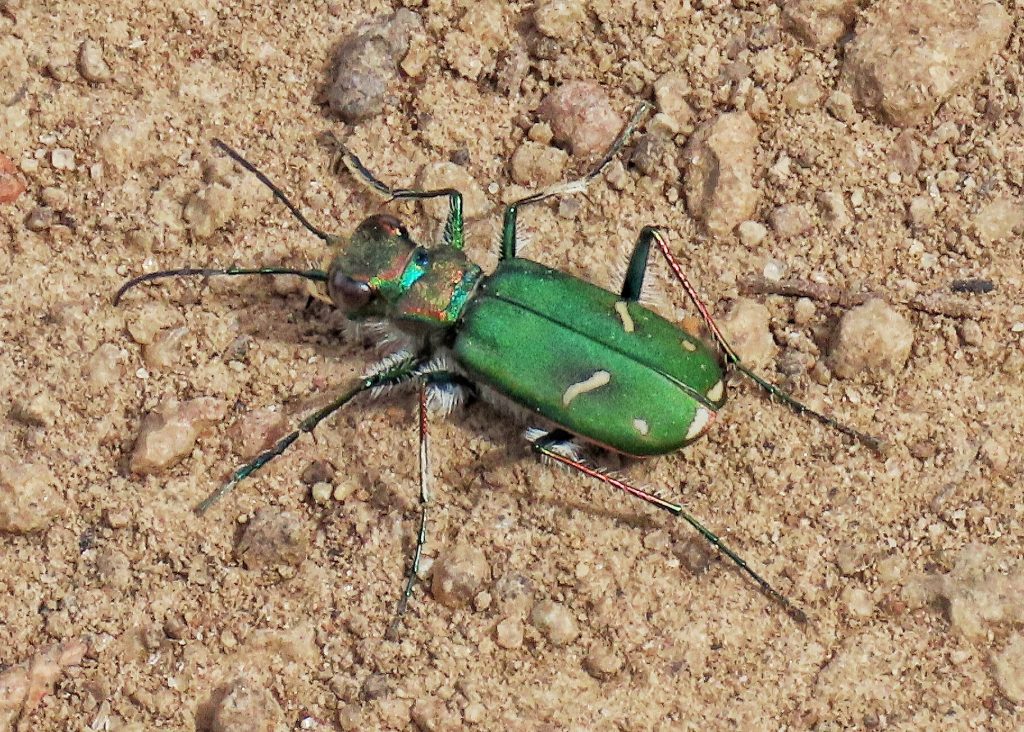
Tiger beetles in general get my juices flowing in a different way than other insects, because they really have to be stalked. But, especially with Cicindela purpurea, there is nothing covert about it. Most of the places I find these critters (my guess is they are ssp. aububonii) are very open, high desert scrublands, where there is no cover, and they will fly away at the slightest threat. So I move very slowly, trying not to cast a threatening shadow. You can see them, but they are just discoloration against the dirt, and though they aren’t that small, still you have to get within less than eight feet to get a decent photo.
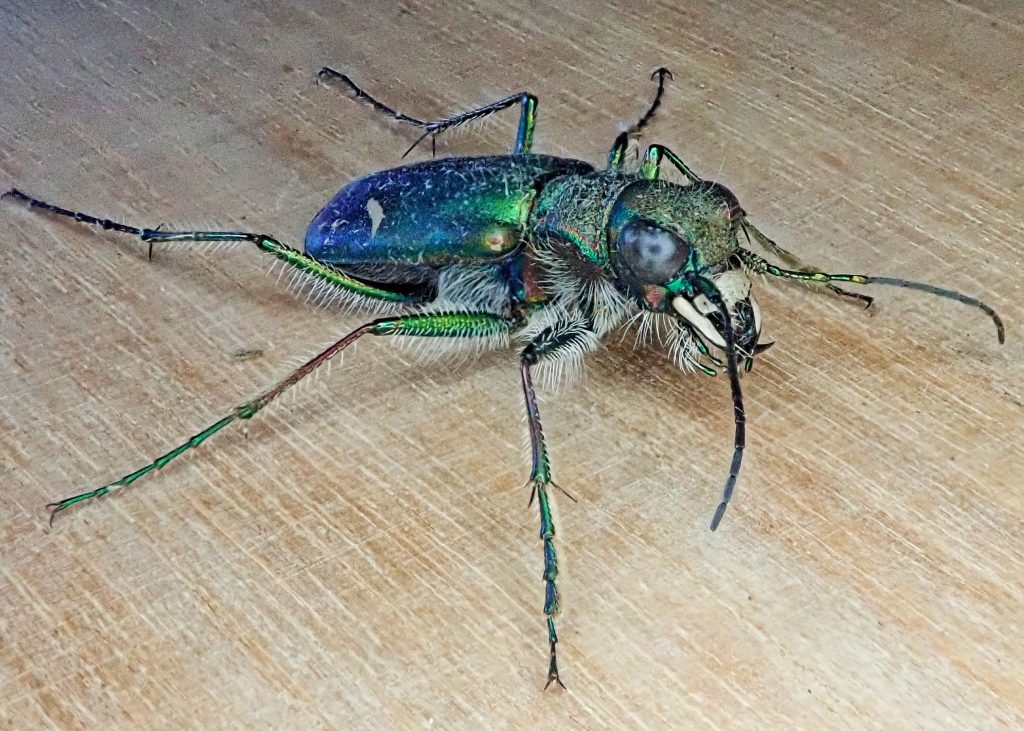
Because of this blog I wanted better than just decent photos. So when I saw this Cow Path Tiger Beetle last November in Gilliam County, Oregon, I circled around to put it between me and the sun, and crawled oh-so-slowly on hands and knees until I could drop a container over it. The other photos were taken in situ last April down in Harney County, Oregon.
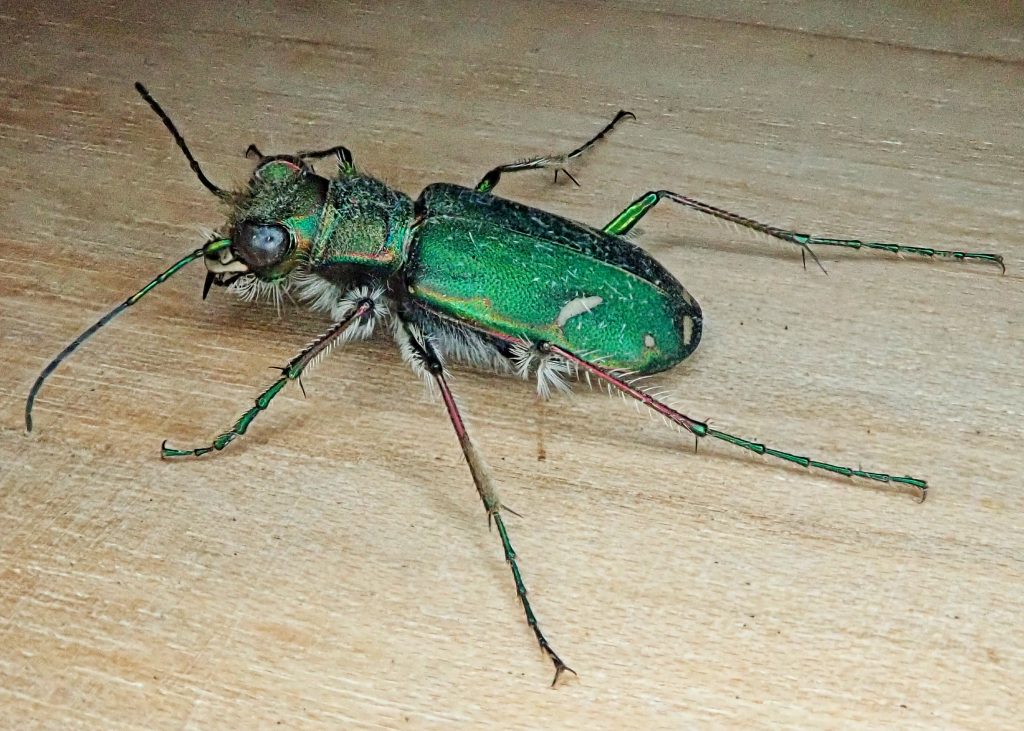
These tiger beetles are fast! They have been documented running at 1.38 feet (29 body lengths) per second. Relative to body size that’s like a human being running over 110 mph! This is both why they are such a fearsome predator, and why they prefer open ground, because all of that speed is worthless without a good racetrack. They are so fast that they often run themselves blind, by out pacing their eyes ability to gather photons. They then have to stop and reorient themselves, before resuming pursuit.
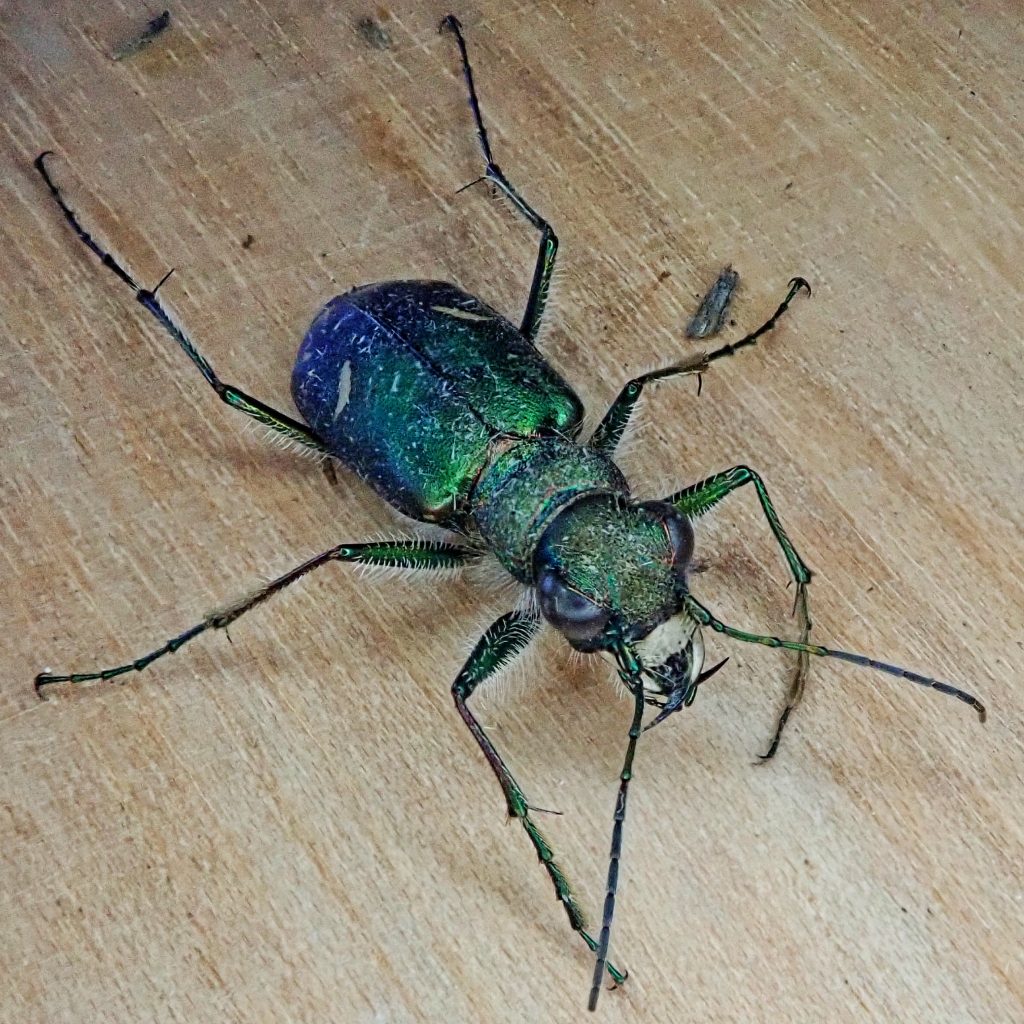
Description– 12-16 mm long; hairy, light colored face, and very large eyes; ground color varies from black to dark purple/red, reddish green, or bronze green; elytral pattern rather minimalist, and is usually limited to an oblique line that doesn’t reach the median, a solid bar on the apex, and a small dot between them; legs are usually the same color as the elytra, with a spike at the tibia/ tarsi joint; but there is significant variation of pattern within each population, and between subspecies.
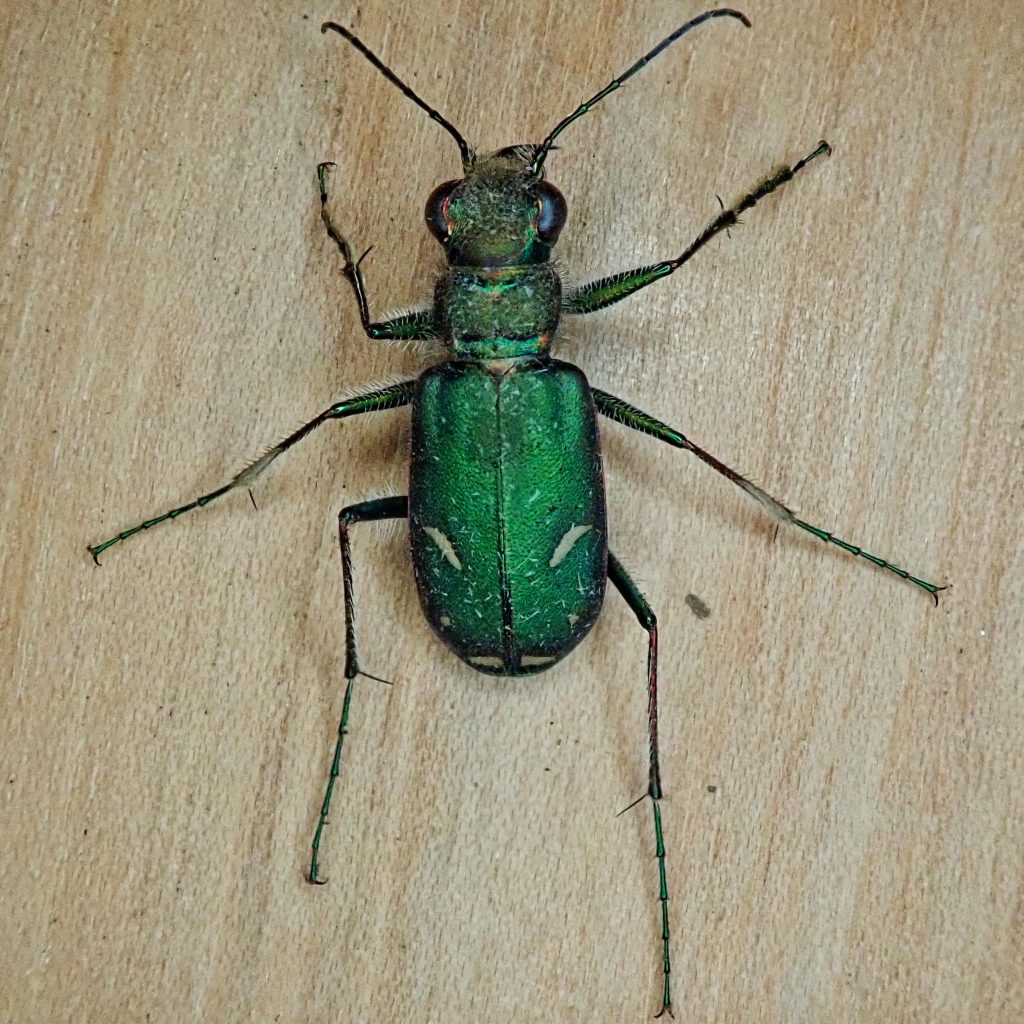
Similar species– Other tiger beetles tend to have either markings on the anterior half of the elytra, or the line in the middle is bent, broad, or otherwise different, or both.
Habitat– Open, grassy areas or low shrubs, usually on clay or sandy soil.
Range– Region wide, except absent from Olympic Peninsula
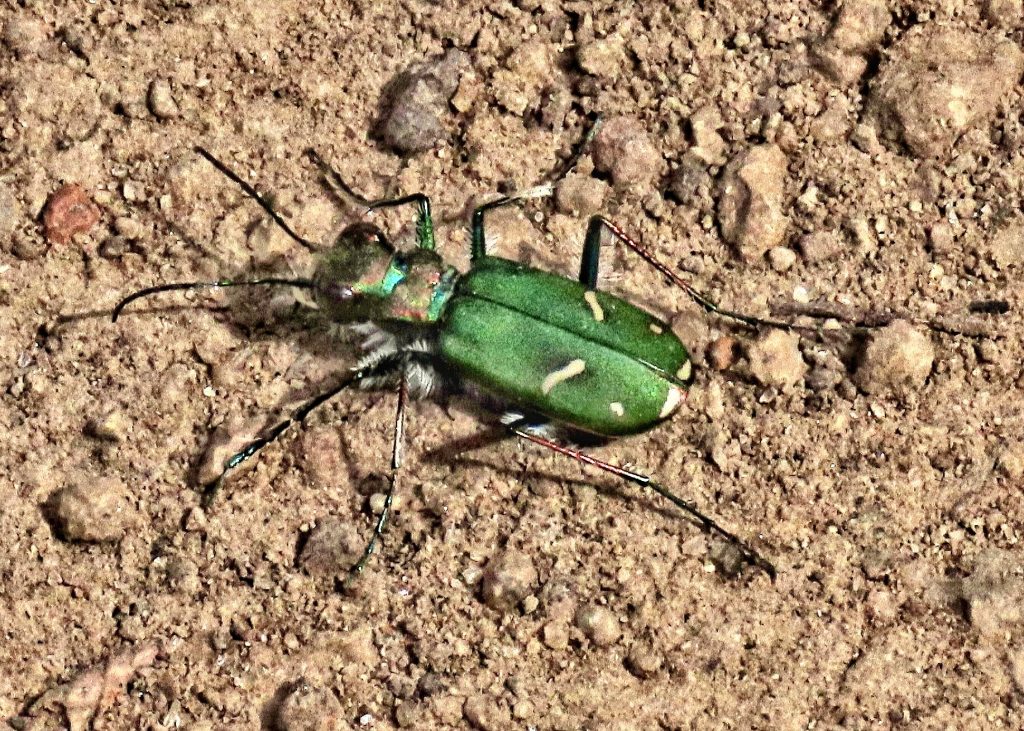
Eats-Whatever it can subdue. Though they can, and regularly do, fly, they don’t do so to hunt, instead chasing down prey.
Eaten by– Whatever insectivores can catch them. But they are fast on the ground and quick to fly. Larvae are parasitized by bee flies (Bombyliidae).
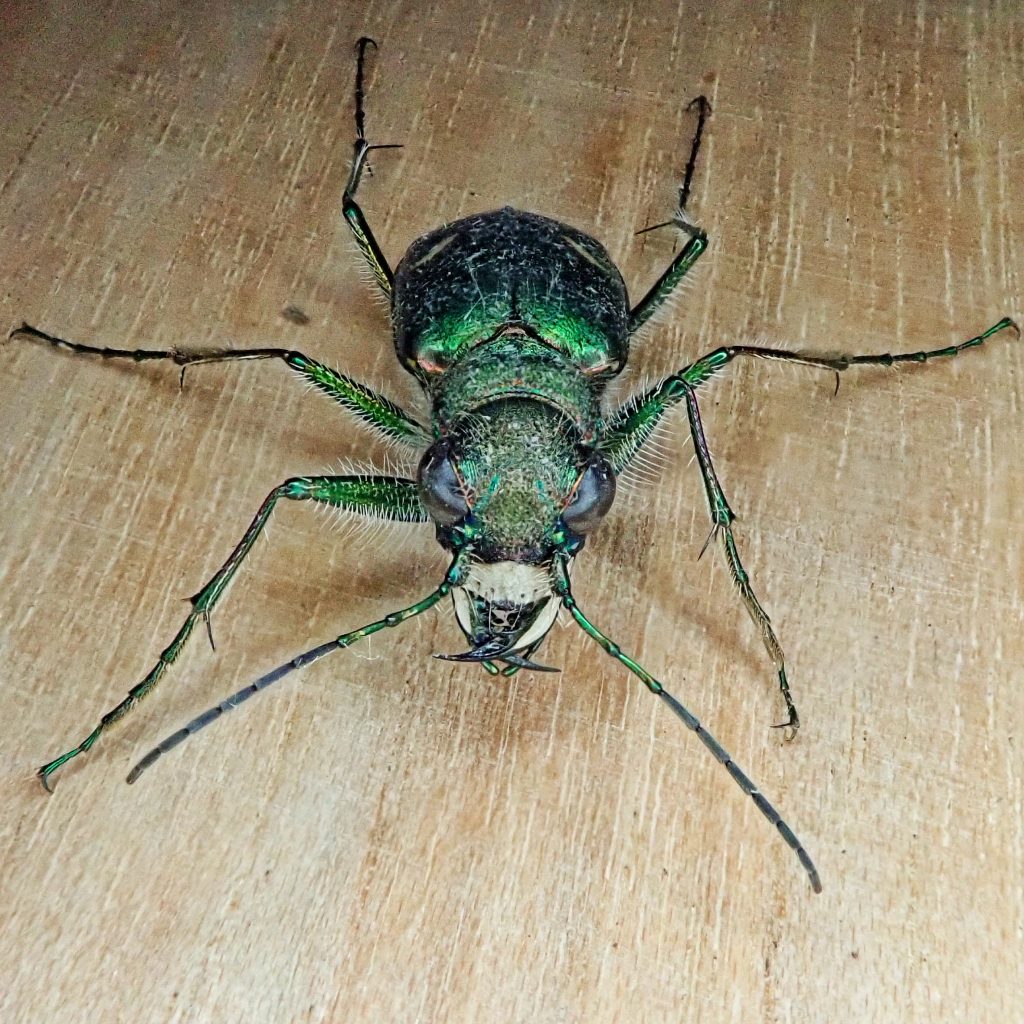
Adults active– February to June and August to November
Etymology of names– Cicindela is Latin for ‘a glow worm’. As far as I can tell tiger beetle larvae do not glow, so I don’t know what this is about. The epithet purpurea is Latin for purple, and refers to the ground color of the type specimen.
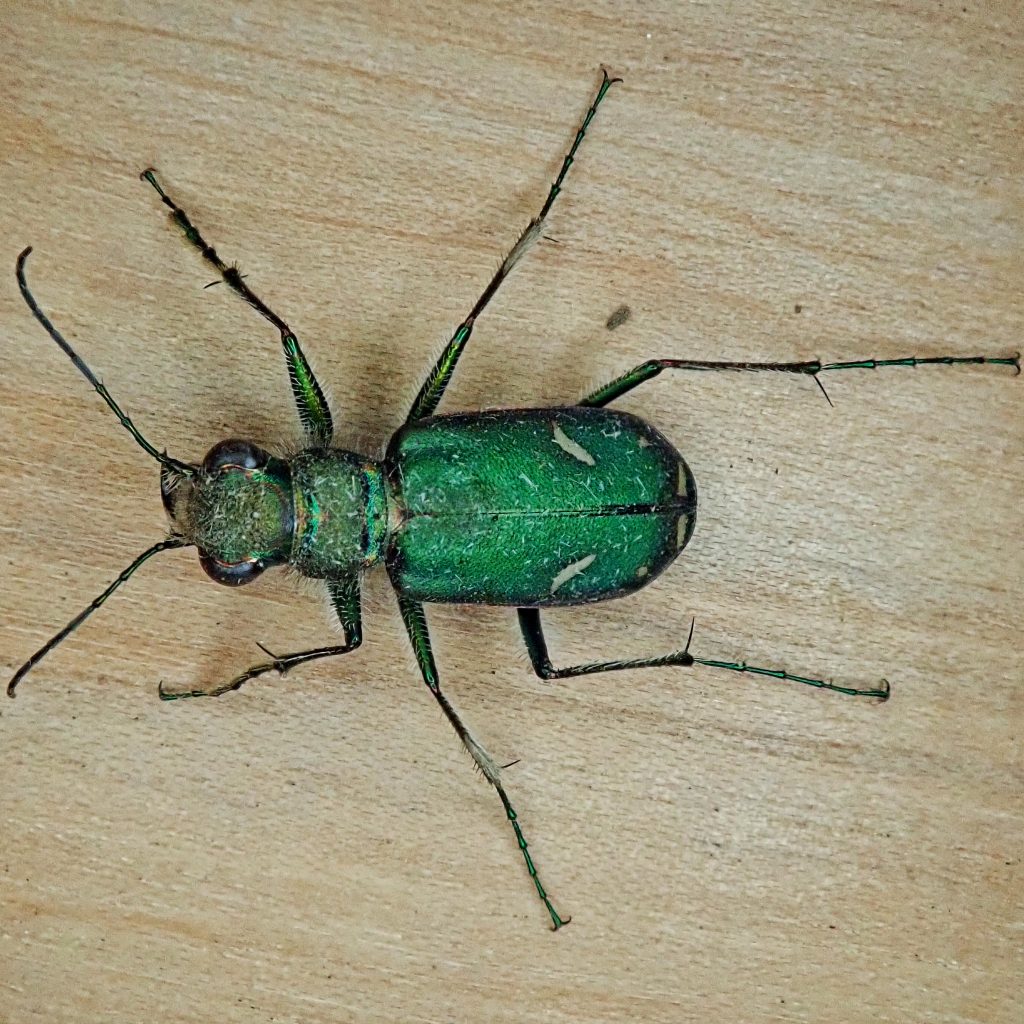
https://bugguide.net/node/view/8994
https://news.cornell.edu/stories/1998/01/tiger-beetles-go-blind-chasing-prey-high-speeds
https://www.montana.edu/yellowstoneinsects/coleoptera/carabidae/cicindela_purpurea.html
http://www.lopers.net/student_org/NebraskaInverts/tbeetles/genera/cicindela/purpurea.htm
https://www.missoulabutterflyhouse.org/cow-path-tiger-beetle-cicindela-purpurea-audubonii/
https://en.m.wikipedia.org/wiki/Cicindela_purpurea
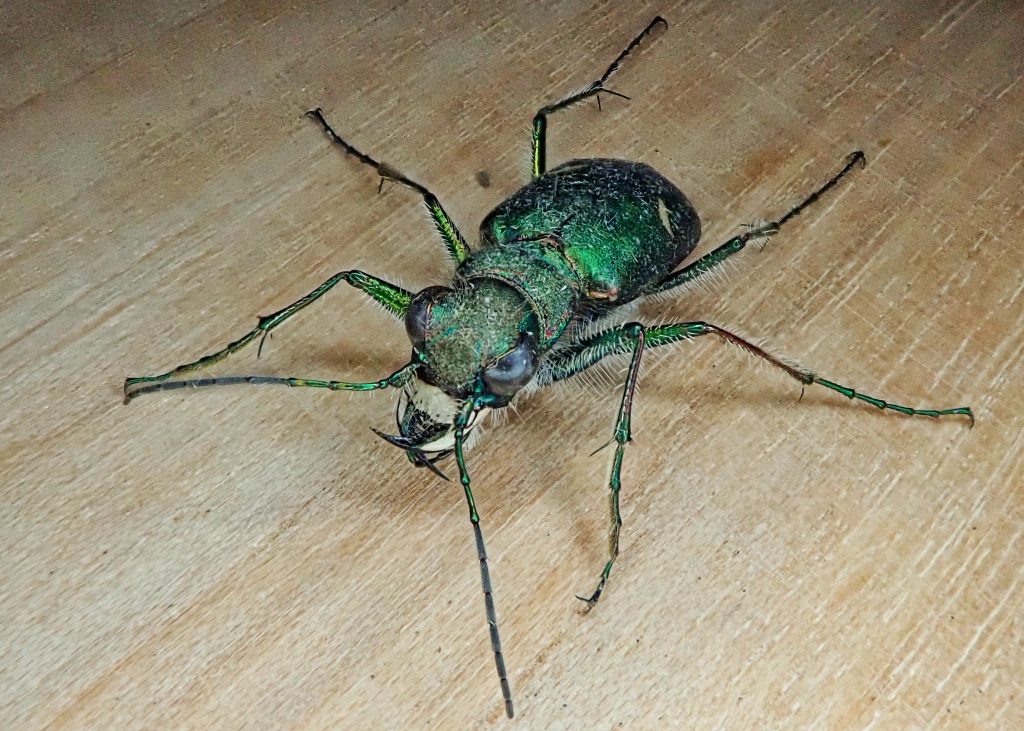
1 thought on “Cicindela purpurea (Cow Path Tiger Beetle)”